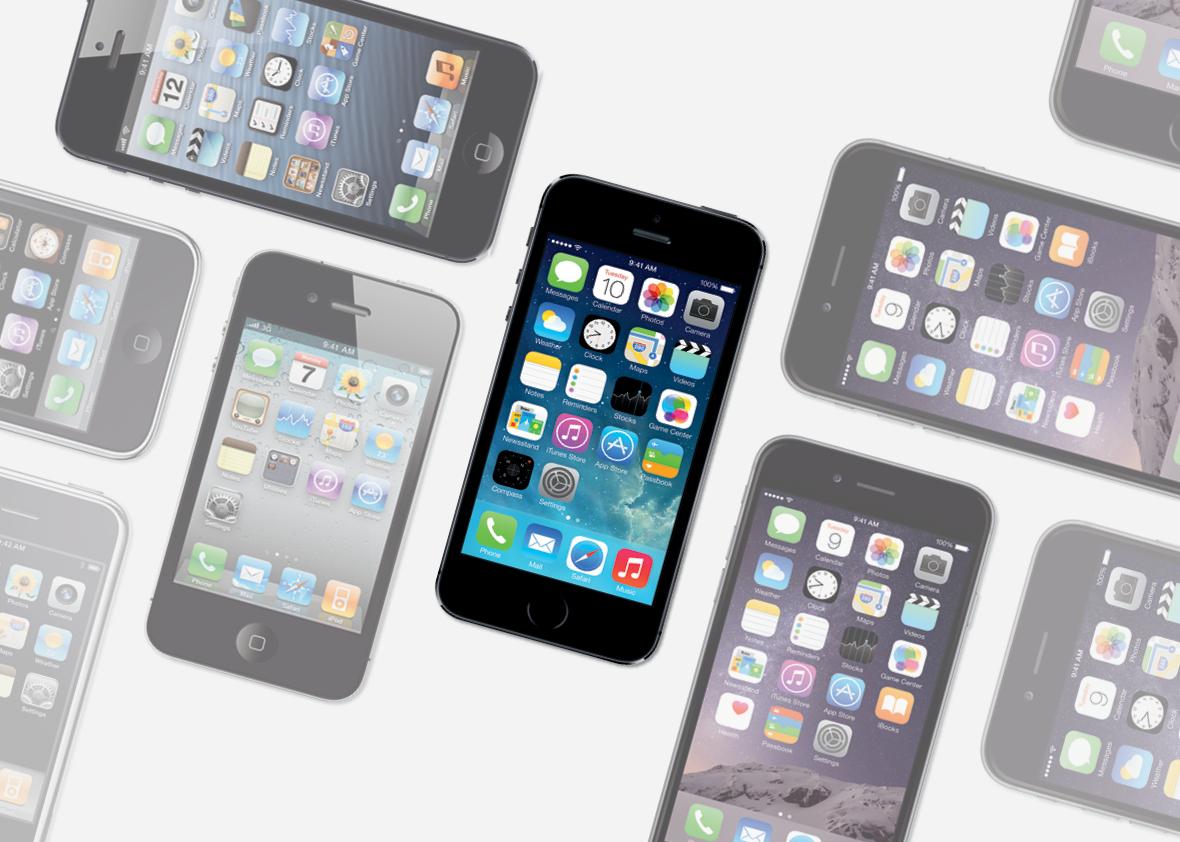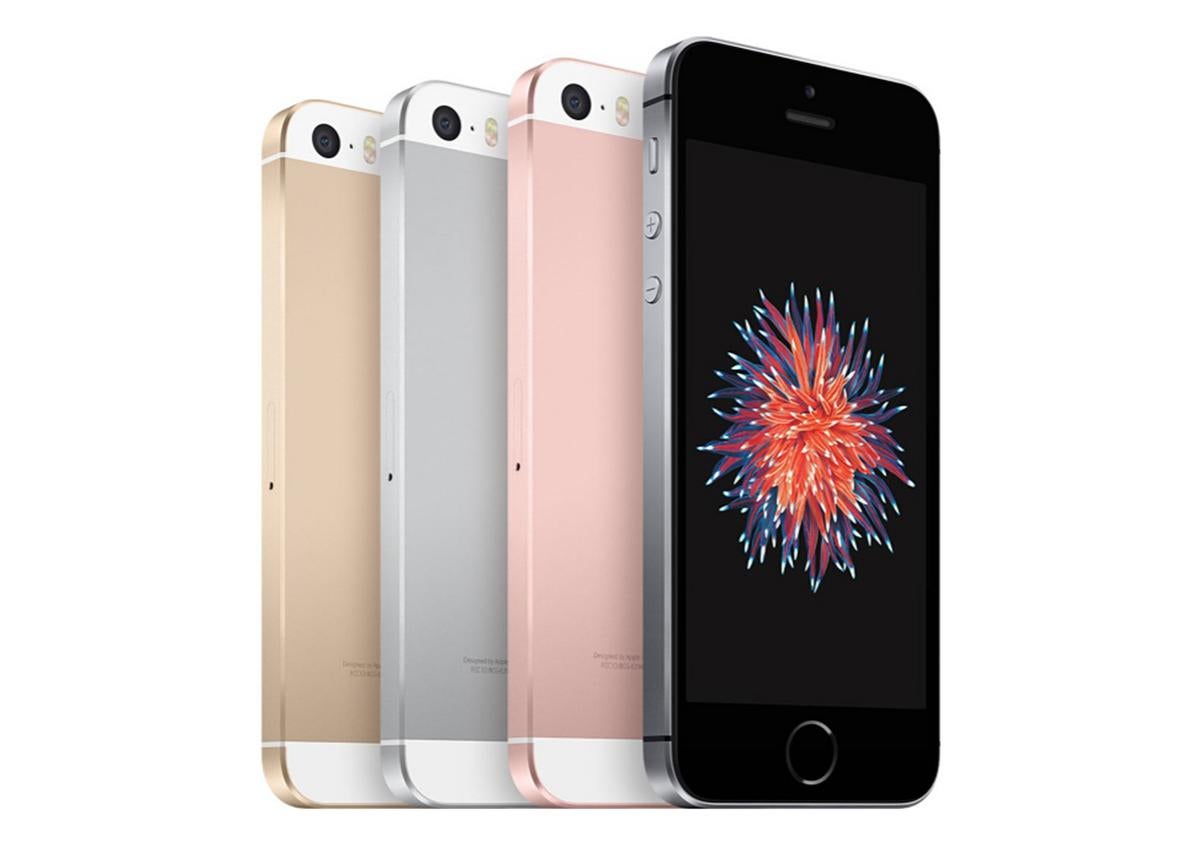With a new phone, like with a new friend, even the technologically ambivalent must make introductions. New phone: It’s why I need your Wi-Fi password. It’s why I don’t have that photo we took last month. It’s why I don’t have any music to play at your barbecue.
But when I made those rounds with my new iPhone SE last month, nobody flinched. “That’s a new phone?” they asked, incredulous. I might as well have been showing people my belt.
I get it. The iPhone SE looks just like the phone you bought four years ago. Its dimensions are identical to the iPhone 5, which was released in 2012, and its design is virtually indistinguishable. It actually weighs slightly more than that old thing.
The iPhone SE has the oldest-looking new design in 10 years of iPhone releases. But not, I think, because Jony Ive’s industrial design team has stopped trying. Rather, the SE suggests that Apple feels it’s found an ideal form for the device, the iPhone equivalent of the Swingline stapler, the KitchenAid mixer, or the Maglite. It’s a design classic—and like a stapler or a flashlight, it’s been canonized only with the passage of time, not for instantly seductive aesthetics but for good old utility.
Back in March, Apple advertised the SE as both new and iconic, a design “renovated from the inside out.” Some tech critics mocked the pretense of novelty, even if the SE’s processing power and hardware were identical to that of the larger iPhone 6. “Apple didn’t debut a new phone today,” Gizmodo crowed. The SE was, Lily Hay Newman wrote for Slate, Apple’s attempt to develop a low-cost product in response to slowing sales. It is cheap by Apple standards, retailing for $399 compared with $749 for an iPhone 6S Plus.
No, the iPhone SE will not turn heads. But for an immensely popular cellphone manufactured by the world’s richest company, it might actually be kind of cool.
I wouldn’t normally have paid attention to the weight or waistline of a phone. But having a new phone that doesn’t proclaim its newness is, well, new. For 20 years, cellphones—more than cars, TVs, or any other consumer product—have been our most prominent, physical marker of technological progress. Having an old, well-kept watch or bicycle is cool. Hardly anyone has a vintage cellphone.

Photo illustration by Annalisa van den Bergh
There aren’t a lot of classic electronics in general. The Game Boy was virtually the same for nine years, an eternity in tech time. Sony modified its legendary Walkman nearly every year. Smartphone tech has progressed with particular speed. Even if you can keep an old cellphone in good shape, chargers, apps, and operating systems will leave you behind. Unlike Japanese motorcycles, phones’ hardware isn’t built to be fixed, updated, or customized. (Though Google, with Project Ara, is trying.) Smartphones have the shortest life expectancy of any consumer tech product. And their design is always changing. A phone gets dated like a carton of milk.
Finally, however, the development of improvements to phones—like a longer battery life and a better camera—has been detached from their form. To some extent, this fits a familiar pattern in design evolution, where initially wild variations in external appearance (see early cars, or computers) give way to a recognizable shape, and eventually most progress occurs internally, out of sight.
The cellphone, though, has less in common with the flat-screen television or the air conditioner than with the watch. It has an intimate relationship with the human body. It has to fit to our faces, our hands, and into our pockets. Those things don’t change much; the surprising thing would be if the shape of the cellphone had continued to grow at the rate it did between the Zippo-size Nokia 3310, which I had in high school, and the Samsung Galaxy S7 Edge, which like the iPhone 6S Plus, is as flat and wide as a Pop-Tart. The SE, by contrast, is concise. Next to the larger models, whose awkward curves recall the original, round-backed smartphones, the SE’s hard lines feel crisp and intentional.
It wasn’t only that I wanted a phone that I could comfortably fit in the front pocket of my jeans, rather than tuck into the back of my pants like a bicycle lock. (Seriously, people do that with the iPhone 6.) I also didn’t need any more screen space. I don’t need to illuminate a restaurant when I send a text message or broadcast a television show to a whole subway car. At the end of the day, I don’t need another reason to spend more time on my phone.
The iPhone SE will still grow old, of course. (Apple’s design may have aged well; its products, as far as I know, still don’t.) It’s not a Le Creuset pot or a Swiss Army Knife. It wasn’t my father’s before me. And yet its function, compared with its bigger and brighter cousins, recalls William Faulkner’s famous line about passing down a watch, here paraphrased: “I give it to you not that you may remember data, but that you might forget it now and then for a moment and not spend all your breath trying to conquer it.” The iPhone SE, in short, is the dumb phone for people who still need a smart phone. It’s a contraction of the virtual world.
Like a pair of 501s, it fills me with the relief of a default option. Its ageless style works two ways: It offers the anonymity of an old thing to new buyers, and it relieves any sense of datedness that might otherwise stick to a 4-year-old phone.
I’m not the kind of person who could keep a phone in working order for that long. But you wouldn’t know it, would you?
